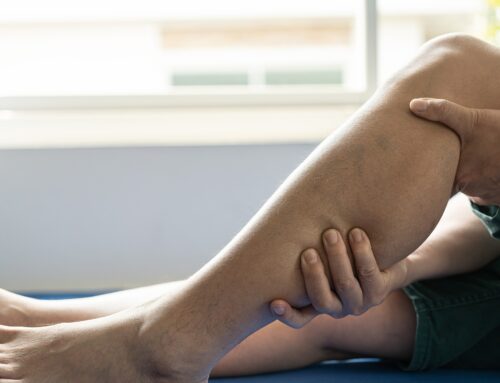Osteoarthritis is a degenerative joint disease that predominantly affects millions worldwide, causing joint pain, stiffness, and a significant decrease in mobility and quality of life. Characterized by the breakdown of cartilage and changes in bone near the joints, osteoarthritis often targets the knees—one of the most common areas burdened by the ailment. This chronic condition can transform everyday activities such as walking, climbing stairs, and even sitting into challenging tasks, impacting both physical and mental health.
Amidst various treatment options, knee braces have emerged as a highly effective management strategy for those grappling with knee osteoarthritis. By providing necessary support and alignment, knee braces can alleviate pain, enhance stability, and potentially slow disease progression. Whether for daily use or specific activities, the right knee brace can make a significant difference in managing the symptoms of osteoarthritis.
Osteoarthritis and Its Effects on the Knees
Osteoarthritis is a chronic joint condition that results from the gradual wear and tear of cartilage, the soft, cushion-like material that covers and protects the ends of bones at the joints.
Over time, the deterioration of cartilage can lead to bone grinding directly on bone, which not only causes pain but also reduces joint mobility and can lead to the development of bone spurs.
Why It Affects the Knees
The knees are particularly vulnerable to osteoarthritis for several reasons. Firstly, the knee joints bear a significant portion of the body’s weight, especially during standing and walking. This constant weight-bearing and the repetitive motion over the years can accelerate the wear and tear on the cartilage. Secondly, any previous injuries to the knee, such as tears in the meniscus or ligament injuries, can increase the risk of developing osteoarthritis in these joints.
The complex structure of the knee and its dependence on surrounding muscles and ligaments for stability make it more susceptible to the effects of degenerative changes.
Common Symptoms Associated with Knee Osteoarthritis
The symptoms of knee osteoarthritis can vary in severity and may develop gradually. Common symptoms include:
- Pain: Often the first symptom noticed, pain in the knee may worsen after activity or towards the end of the day.
- Stiffness: A common complaint in the morning or after sitting for long periods, stiffness tends to resolve with movement as the day progresses.
- Swelling: Fluid accumulation in the knee joint can lead to swelling, making it feel tender and warm.
- Reduced Mobility: Decreased range of motion in the knee can make it difficult to perform everyday activities such as walking, climbing stairs, or rising from a chair.
- Crepitus: A grinding or cracking sensation when the knee is moved, often accompanied by pain.
- Instability: The sensation of the knee giving out or feeling unable to support weight reliably.
How Knee Braces Aid in Managing Osteoarthritis
Knee braces are a tool for those dealing with the discomfort and mobility issues associated with knee osteoarthritis. They work by providing external support that helps to alleviate pain, improve stability, and can potentially slow the progression of the disease.
By redistributing weight and relieving pressure from affected areas of the knee, braces enhance functional capacity and enable more freedom of movement.
Types of Knee Braces Recommended for Osteoarthritis
The choice of knee brace varies depending on the severity of osteoarthritis and the specific needs of the individual. below are three main types of braces that manage knee osteoarthritis effectively:
- Functional Braces
Functional braces stabilize the knee joint, which is crucial for those with osteoarthritis. These braces support the knee during motion, aiding in activities that might otherwise be painful or difficult. They benefit individuals who have experienced knee injuries and are at higher risk of instability due to weakened ligaments or insufficient muscular support around the knee. - Unloader Braces
Unloader braces specifically aim to relieve pain for people suffering from knee osteoarthritis. They shift the weight away from the damaged area of the knee, reducing the load on the arthritic part of the joint. This redistribution of weight significantly decreases pain and improves the user’s ability to perform daily activities comfortably. Unloader braces are ideal for those with significant medial compartment osteoarthritis and offer a non-invasive alternative to surgery. - Support Braces
Support braces, generally softer and more flexible than other types, provide general support and warmth to the entire knee area. Often made from elastic or neoprene, these braces are suitable for everyday use. They help manage symptoms by compressing the knee area, which can improve proprioception (the sense of joint position) and reduce pain and swelling during activities. Support braces are a good option for individuals with mild to moderate osteoarthritis.
Each type of brace offers unique benefits and can be tailored to meet the specific needs of the user, making knee braces a versatile and essential component in managing knee osteoarthritis effectively.
Selecting the Right Knee Brace for Osteoarthritis
Choosing the correct knee brace is vital to effectively managing symptoms of osteoarthritis while maintaining an active lifestyle. The right brace not only helps in alleviating pain but also supports joint stability and can enhance mobility.
Factors to Consider When Choosing a Brace
- Fit: The brace should fit snugly around the knee without causing pressure or discomfort. A proper fit ensures that the brace can provide adequate support without slipping or bunching, which can hinder movement and reduce effectiveness.
- Material: Knee braces come in various materials, including neoprene, fabric blends, and even rigid polymers for more substantial support. The choice of material affects the comfort, breathability, and the level of support provided. Neoprene is popular for its heat retention properties which help in reducing pain and swelling, while breathable fabrics are better suited for extended wear, especially in warmer climates.
- Type of Support: As discussed, knee braces come in different types designed to cater to specific needs. Functional braces offer stability for weakened knees, unloader braces are best for those with significant pain due to osteoarthritis, and support braces are ideal for daily wear. The choice of support type should be based on the user’s specific condition and activity level.
Tips for Getting the Most Out of Your Knee Brace
- Wear It During Activities: While it might be tempting to wear a knee brace all day, it’s most effective when worn during activities that strain the knee, such as walking, climbing stairs, or participating in sports.
- Maintain the Brace Properly: Regular cleaning and inspection of the brace ensure its longevity and effectiveness. Follow the manufacturer’s instructions for care, and replace the brace if it shows signs of wear or doesn’t fit as it used to.
- Combine with Other Treatments: For best results, use the knee brace as part of a comprehensive treatment plan. Physical therapy, appropriate exercise, and weight management can all enhance the effectiveness of a knee brace.
- Consult Healthcare Professionals: It is advisable to consult with a healthcare provider or a specialist in orthotic devices to select the right brace and ensure proper fitting. This step is important, as they can provide professional advice based on an individual’s specific medical needs and lifestyle.
Lifestyle Changes and Additional Therapies
Managing osteoarthritis effectively extends beyond wearing the right knee brace. A holistic approach that incorporates lifestyle changes and complementary therapies can significantly enhance the quality of life and potentially slow the progression of the disease.
Complementary Treatments and Lifestyle Adjustments to Manage Symptoms
- Exercise: Regular, low-impact exercises such as swimming, walking, or cycling can help maintain joint function and reduce stiffness. Strength training can also be beneficial, as stronger muscles support and protect the joints more effectively.
- Weight Management: Maintaining a healthy weight reduces the stress on weight-bearing joints, like the knees. Even a small amount of weight loss can relieve significant pressure on your knees and reduce pain.
- Physical Therapy: A physical therapist can develop a personalized exercise program that improves range of motion and strengthens the muscles around the knee, which helps stabilize and protect the joint.
- Assistive Devices: In addition to knee braces, other assistive devices such as canes or walkers can help distribute weight more evenly and reduce stress on the knees.
Importance of a Holistic Approach: Exercise, Diet, and Medical Advice
- Diet: Incorporating anti-inflammatory foods into your diet can help reduce joint swelling and pain. Foods rich in omega-3 fatty acids, antioxidants, and phytochemicals, such as fish, nuts, fruits, and vegetables, are beneficial. Avoiding processed foods and sugars can also help manage inflammation.
- Regular Medical Check-ups: Regular consultations with healthcare professionals can help monitor the progression of osteoarthritis and adjust treatments as necessary. This may include adjusting medications, exploring new therapies, or reassessing physical activity levels.
- Mental Health: Chronic conditions like osteoarthritis can also affect one’s mental health. Activities that reduce stress, such as yoga, meditation, or even spending time in nature, can improve overall well-being.
- Education: Understanding osteoarthritis and its effects can empower individuals to make informed decisions about their health and treatments. Education about the condition can come from reliable sources or directly from healthcare providers.
Adopting these complementary treatments and lifestyle adjustments can create a comprehensive management plan that addresses not just the physical symptoms of osteoarthritis but also enhances overall health and well-being. By combining these strategies with the use of a knee brace, individuals can lead a more active and comfortable life despite the challenges of osteoarthritis.
Embracing a Fuller Life with Osteoarthritis Management
Effectively managing osteoarthritis is crucial for maintaining and enhancing quality of life. This condition, while chronic, does not have to dictate the limits of your daily activities or reduce your enjoyment of life. By utilizing supportive devices such as knee braces, coupled with targeted lifestyle changes and complementary therapies, you can significantly alleviate the symptoms of osteoarthritis.
Consultation with healthcare professionals is essential to tailor a management plan that suits your specific needs and circumstances. A personalized approach ensures that every aspect of the condition, from pain to mobility issues, is addressed comprehensively.
For those seeking expert guidance on selecting the right orthotic solutions, Care-Med LTD is here to help. Our team of experienced professionals is dedicated to assisting you in finding the most effective braces and support systems that align with your lifestyle and medical requirements.
Don’t let osteoarthritis hold you back. Contact Care-Med LTD for a consultation, and take the first step towards regaining control of your life and your mobility.
Share This Story, Choose Your Platform!
Table of Contents
We specialize in orthotics, body braces, and compression wear tailored to your unique needs in Toronto. Reach out to us at info@caremed.care or call 416-782-5353 to book your fitting and consultation.
Experience the difference of customized solutions designed just for you.











